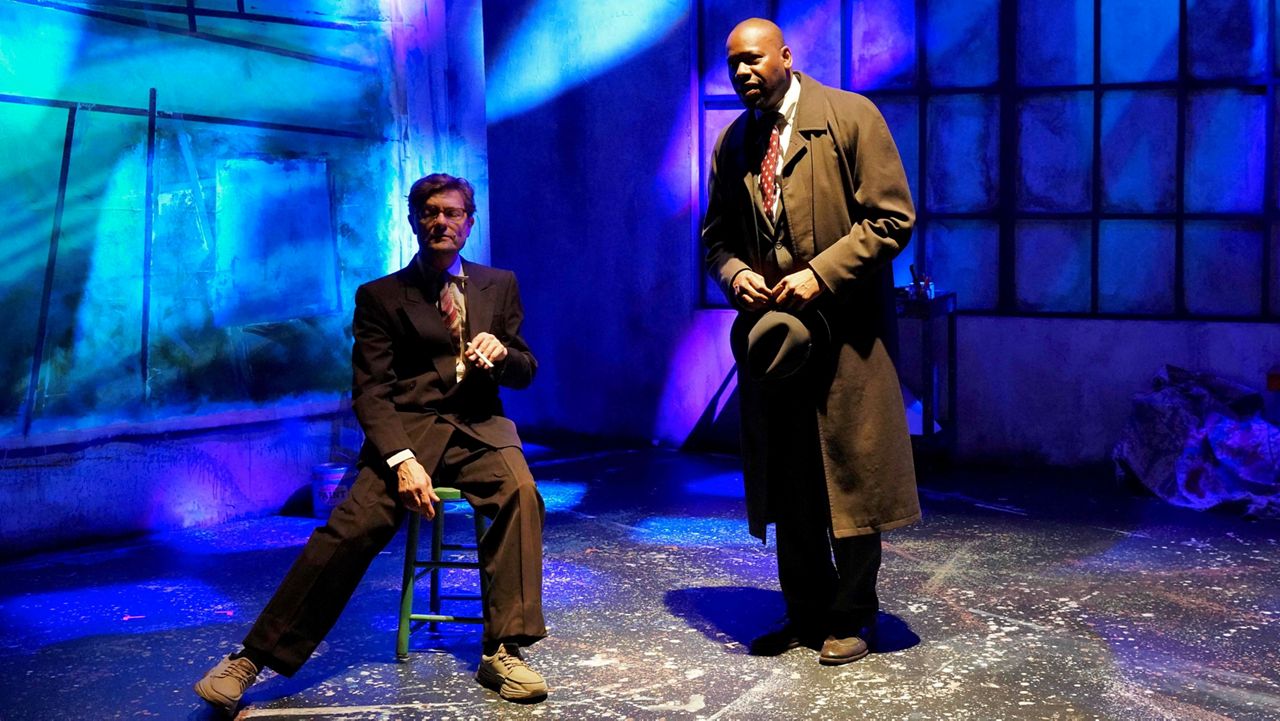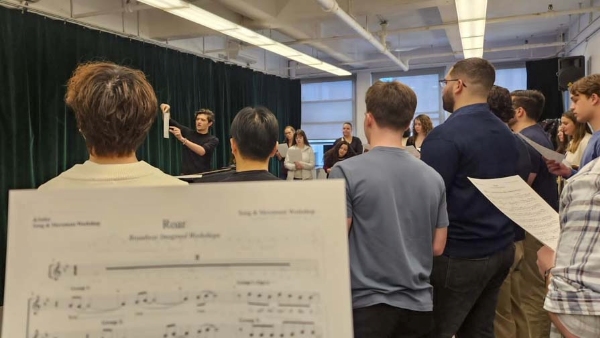CLEVELAND, Ohio — Beauford Delaney, a serious however underrecognized American artist who chronicled the Harlem Renaissance with visionary depth earlier than transferring to Paris within the Nineteen Fifties to flee racism and homophobia, now has a spot on the Cleveland Museum of Artwork.
The museum introduced {that a} main summary canvas by Delaney, “Untitled,’’ 1958, has joined the gathering within the newest spherical of acquisitions authorized Monday by the museum’s board of trustees. The portray is the newest in a sequence of great acquisitions of works by African American artists, together with “Alabama,’’ a serious work of the Civil Rights Period abstractionist Norman Lewis.
Painted in luminous swirls of yellow accented by notes of pale blue, the Delaney portray seems to glow, a minimum of in {a photograph}, with hallucinatory depth.
The museum described the canvas, which measures practically 5 ft excessive and practically 4 ft huge, as “Considered one of Beauford Delaney’s most interesting and most exuberant achievements.’’
The museum’s acquisitions additionally included a late Fifteenth-century triptych by Grasp of the Krainburg Altar, a painter from current days Slovenia, that depicts the Lamentation of Christ with what the museum describes as a “topographically correct’’ illustration of Jerusalem within the background.

Triptych with The Lamentation of Christ (middle), St. Barbara (left wing), St. Catherine of Alexandria (proper wing), The Annunciation (reverse wings), c. 1486–90. Grasp of the Krainburg Altar (Austrian, energetic c. 1490-1520). Heart: oil on poplar; Wings: oil and gold leaf on poplar panel; middle: 45.7 x 33 cm (18 x 13 in.); wings: 51 x 15.9 cm (20 1/16 x 6 1/4 in.). The Cleveland Museum of Artwork, John L. Severance Fund.Cleveland Museum of Artwork
The cityscape was modeled after a woodcut by artist Erhard Reuwich for the 1486 publication “Peregrinatio in Terram Sanctam,’’ (”Pilgrimage to the Holy Land”) by creator Bernhard von Breydenbach, who traveled to the Holy Land in 1483–84.
Reprinted 13 instances over the subsequent 30 years, the ebook turned the early Renaissance equal of a bestseller. The museum stated that whereas it has no clear date for its new triptych, it believes the portray should have been made after 1486 as a result of the artist knew of the illustration.
“Bamboos in Wind,’’ a sequence of 10 work in ink on paper made in 1934 by Korean artist Jin-woo Kim joined the gathering as effectively. The museum described the artist as one of the crucial celebrated painters of early Twentieth-century Korea, and one who was “extremely praised for his renderings of extraordinarily sharp bamboo, usually in comparison with iron spears and knives.”

Bamboos in Wind, 1934. Kim Jin-woo (Korean, 1883-1950). Ten-panel folding display screen; ink on paper; every panel: 128.9 x 33 cm (50 3/4 x 13 in.); every panel framed: 194.3 x 47.6 cm (76 1/2 x 18 3/4 in.). The Cleveland Museum of Artwork, Severance and Greta Millikin Buy Fund.Cleveland Museum of Artwork
The work might have a political dimension. “Deeply concerned in lots of resistance efforts for Korea’s independence, the artist emphasised sharp edges by way of dynamic brushstrokes, suggesting his bamboos have been weapons to problem the oppression of Japanese colonial rule in Korea (1910–45),’’ the museum stated in its information launch.
Delaney, born in Knoxville, Tennessee in 1901, to a Baptist minister, Samuel Delaney, and his spouse, Delia Johnson Delaney, confirmed an unlimited aptitude at drawing as a toddler.
An aged white artist, Lloyd Branson, gave him classes and inspired him to review artwork in Boston, the place Delaney moved at age 16. After transferring to New York in 1929, Delaney developed a method based mostly on thickly painted surfaces and sensible colours resembling these of the early Twentieth-century French Fauvist painters, together with Andre Derain and Henri Matisse.
Delaney painted outstanding Black topics together with W. E. B. Dubois. He later portrayed Marian Anderson, Duke Ellington, Ethel Waters, Louis Armstrong, and James Baldwin.
Georgia O’Keeffe, an admirer of Delaney, painted his portrait. Different admirers included the novelist Henry Miller, and Baldwin, whom Delaney befriended in Paris. All through the Nineteen Fifties, in Paris, Delaney’s work advanced towards full abstraction.
The museum stated that Delaney “was so passionate concerning the aesthetic and symbolic prospects of yellow that it turned his ‘signature’ hue; subsequently, his yellow abstractions have change into his most fascinating and sought-after works.’’
For Delaney, “yellow connoted emotions of non secular ecstasy and transcendence”…” even when his private circumstances have been difficult, if not bleak.”
Delaney earned intensive essential reward for his work. John Russell, the artwork critic of The New York Instances, known as him “an uninhibited colorist (although by no means an unintelligent one).” Miller entitled an essay about him, “The Wonderful and Invariable Beauford Delaney.’’
Different artists seemed as much as him. His obituary within the ‘Instances quoted Herbert Gentry, an expatriate American artist dwelling in Paris, as saying that Delaney’s “robust level was because the thinker, the giver.’’ The article famous that Delaney was beneficiant to others, freely giving most of a $5,000 award to artists in want of a mortgage.
Though Delaney constantly made high-quality work, had gallery illustration, exhibited his work in quite a few reveals, and earned excessive reward, the museum stated, “monetary success eluded him.” The artist succumbed to psychological sickness and died in an asylum in Paris in 1979 at age 77.
Museum Director and President William Griswold alluded to the Delaney portray in a latest symposium, hinting that the museum would purchase a serious work by an African American artist.
With out naming Delaney, he stated the work could be displayed within the museum’s East Wing gallery specializing in Summary Expressionism, beforehand dominated by white artists, till the acquisition of the Norman Lewis portray.


